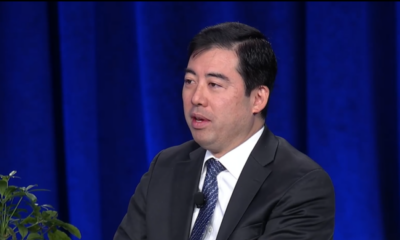Filadendron | E+ | Getty Images
High interest rates aren’t deterring many shoppers from store credit cards.
When asked to choose between a store card or a buy now, pay later plan, 58% of surveyed shoppers prefer store cards, according to a new report by LendingTree. The remaining 42% picked BNPL loans.
The site polled 2,040 U.S. adults in September.
That choice “speaks to the fact people may be looking for a little bit longer-term help with their financial situation,” said Matt Schulz, chief credit analyst at LendingTree.
In December, new cards offered by the top 100 retailers had an average annual percentage rate of 32.66%, up from 27.7% in 2022, according to the Consumer Financial Protection Bureau. Many short-term BNPLs do not charge interest, but longer-term loans do, and on the higher end, those rates can be comparable to a store card.
More from Personal Finance:
Here’s why some credit card APRs aren’t going down
Egg prices may soon ‘flirt with record highs,’ supplier says
Biden’s student loan forgiveness ‘Plan B’ is in its ‘last step,’ expert says
Younger shoppers have been early adopters of BNPL, and that shows in their payment preferences.
About 59% of Gen Zers and 51% of millennials prefer BNPL over retail store credit cards, Lending Tree found. To compare, 38% of Gen Xers and 22% of baby boomers prefer BNPL.
“Buy now, pay later really started off as a millennial, Gen Z phenomenon,” Schulz said. “Younger Americans really drove a lot of the growth.”
Whichever payment option you plan to use to finance holiday purchases this year, keep in mind the cost of carrying the debt, experts say.
How store cards and BNPL work
Retail store credit cards and BNPL loans operate differently.
A retail store credit card is a long-term, revolving line of credit that a store offers in conjunction with a bank partner. To entice new users, stores generally offer applicants a discount on their first card purchase, or financing deals. The card may also be tied into the retailer’s loyalty program, sometimes with bonus rewards for cardholders.
A buy-now, pay later loan — issued through a provider the merchant works with — typically breaks up the total cost of a purchase into installment payments over a set period of time. Some providers offer longer repayment periods, too, and charge interest. Users can have multiple purchases with the same BNPL provider at once, but those may be treated as individual loans with their own repayment terms.
With either payment method, make sure to pay off the balance on time — you might face penalties like fees and interest if you don’t stay on track.
A retail credit card can affect your credit history, as the account is reported to the three major credit bureaus: Equifax, Experian and TransUnion.
BNPL has been somewhat “invisible” to credit bureaus in the past, meaning the loan did not show up on users’ credit reports. But AfterPay, Affirm and Klarna are among the providers reporting some BNPL loans to the credit bureaus.
Both payment forms can be attractive for shoppers. Retail store credit cards tend to be easier to qualify for compared to other credit cards, especially as banks have been tightening credit card approval requirements in recent months, Schulz said.
Over the third quarter of 2024, some banks have tightened their lending standards for credit card loans, lowered their credit limits and increased minimum credit score requirements, according to the Federal Reserve.
“It’s a reaction from the banks to rising delinquencies, rising debt and overall economic uncertainty,” Schulz said.
BNPL can also be relatively easy to apply for and qualify.
“The rise of buy now, pay later is the biggest reason why Americans are opening fewer store cards,” according to Ted Rossman, an industry analyst at Bankrate.
‘Consider the total cost of ownership’
The holiday season is here, a busy time to buy gifts for family and friends. If you find yourself in a situation where a retail store credit card or a BNPL can help stretch your budget, consider the “total cost of ownership,” Rossman said.
“Both of these payment methods can be advantageous depending on how you use them, but could also be a pretty slippery slope into debt and overspending,” he said.
BNPL can be tricky because you can have multiple loans running at the same time, and the costs “can add up,” Rossman said. Make sure to keep track of the pay-later loans you have and are able to withstand the automatic deductions.
If you can’t pay a retail card purchase off at the end of the statement period, any discount, reward or perk that you may get is going to be washed over by the interest you’ll owe on top of the outstanding balance, Schulz said.
“Paying 30% interest to save 15 or 20% doesn’t make a whole lot of sense financially,” Schulz said.


 Finance1 week ago
Finance1 week ago
 Accounting1 week ago
Accounting1 week ago
 Personal Finance1 week ago
Personal Finance1 week ago
 Accounting1 week ago
Accounting1 week ago
 Accounting1 week ago
Accounting1 week ago
 Accounting1 week ago
Accounting1 week ago
 Accounting1 week ago
Accounting1 week ago
 Leaders1 week ago
Leaders1 week ago










